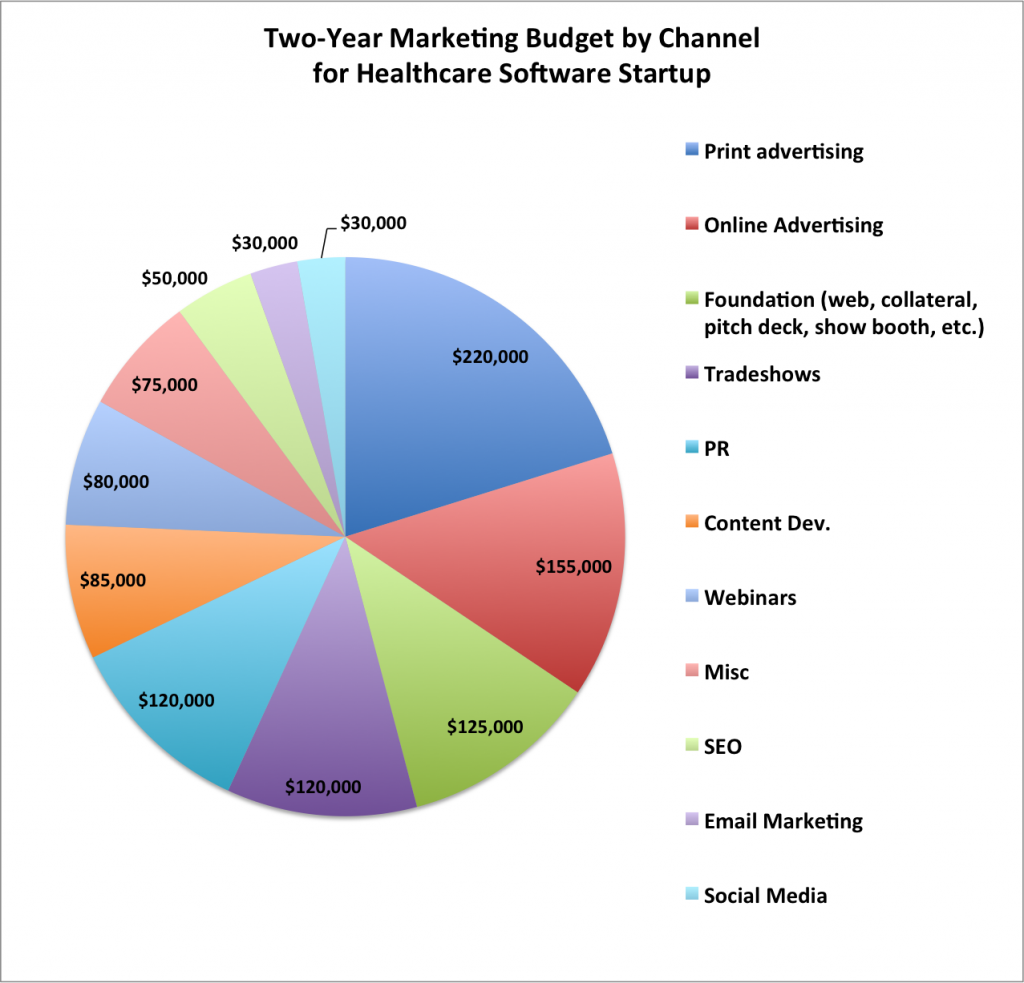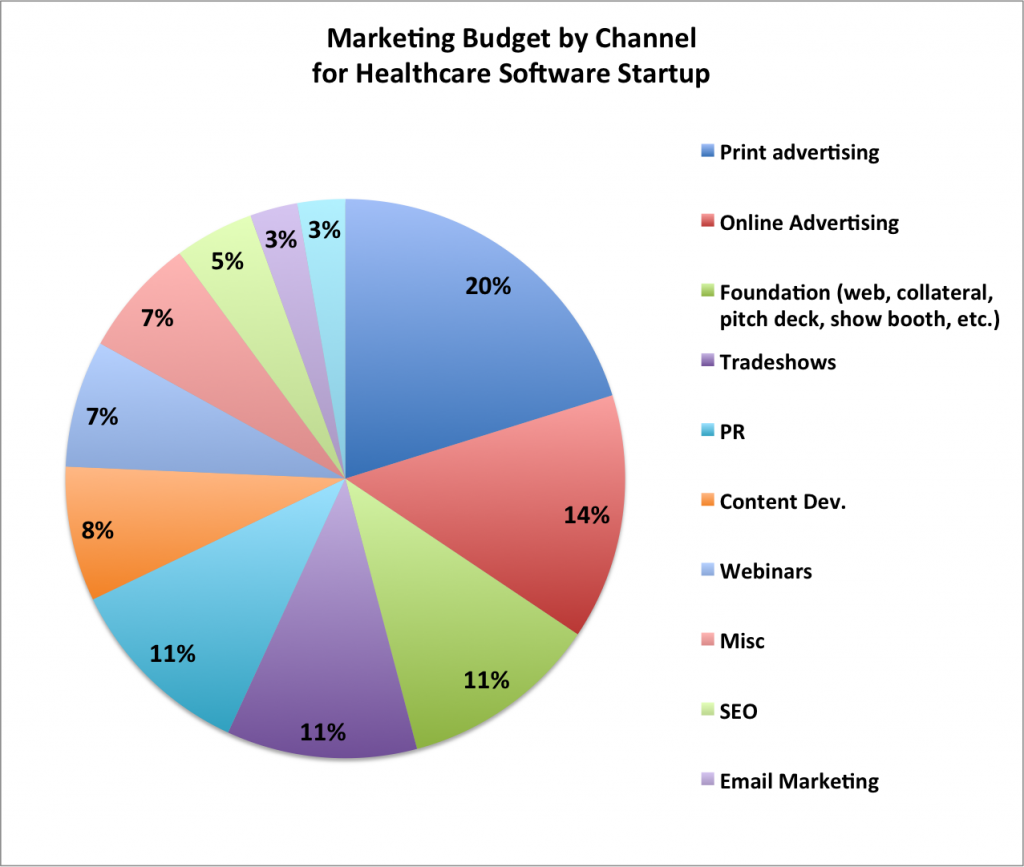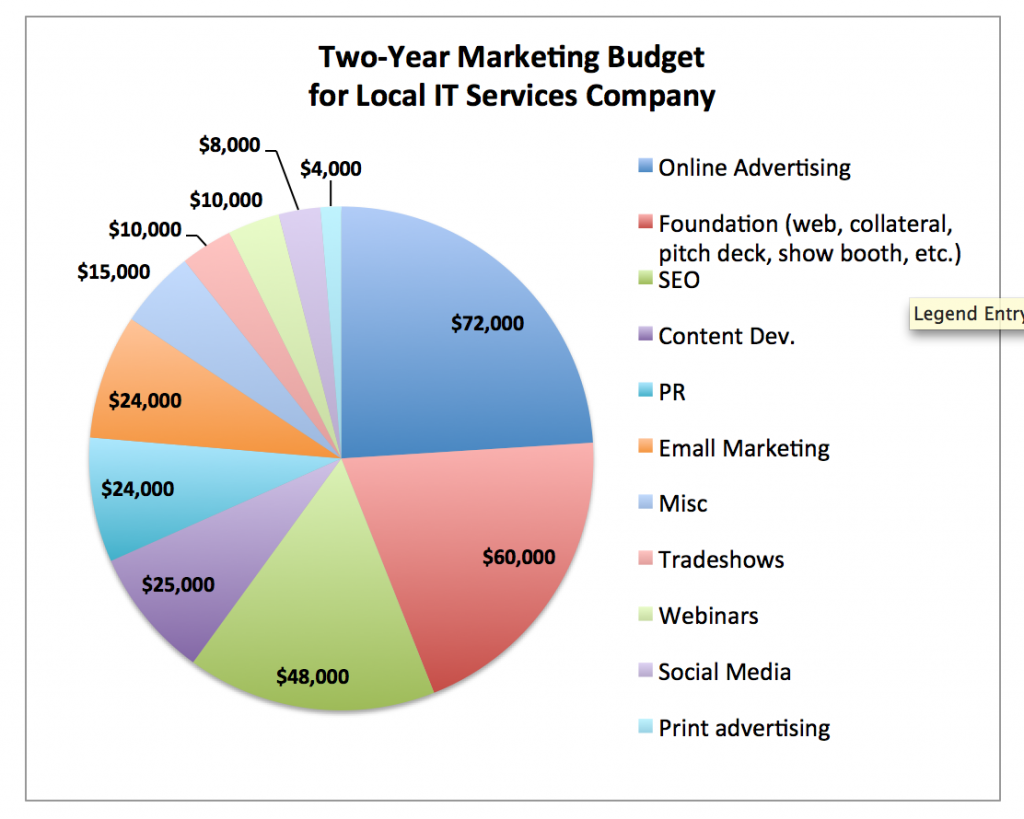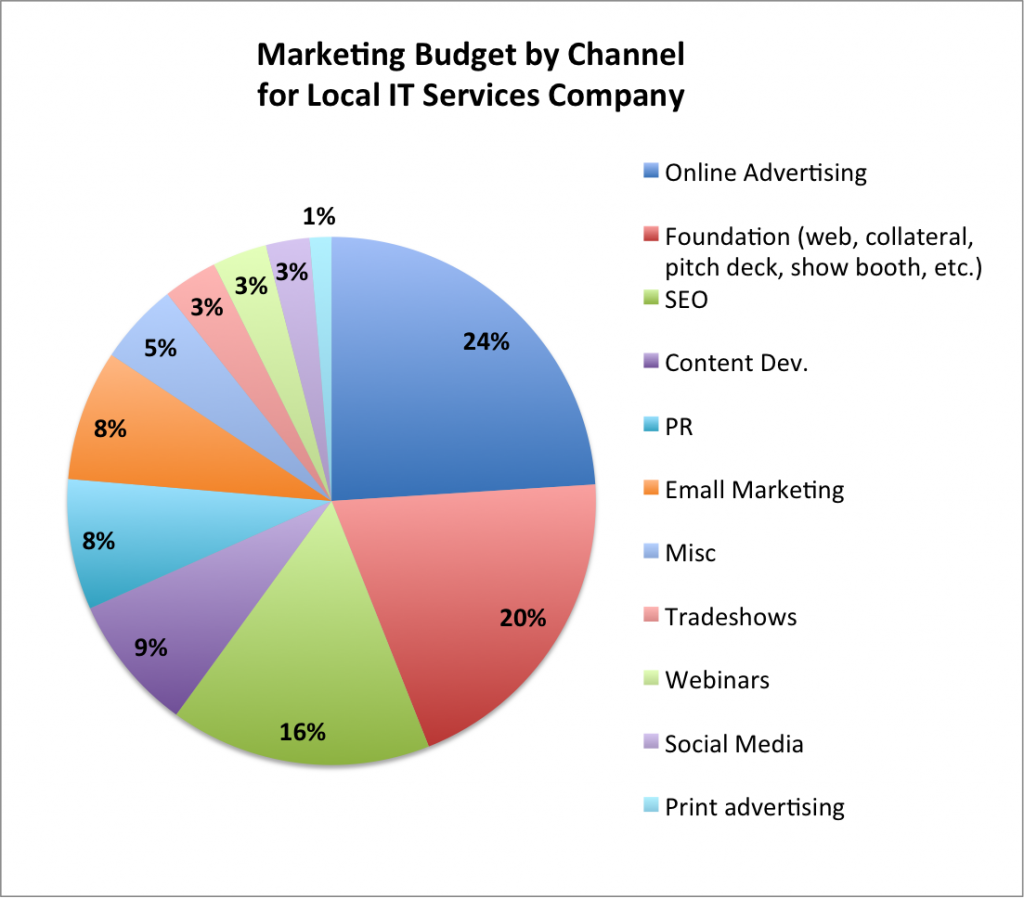I’m often called by entrepreneurs, especially those seeking to close their first significant equity round. Nine times out of ten they ask: “How much will I need for marketing?” And that’s quickly followed by “How much should I spend on each marketing channel?”
Answering these questions is pretty complicated. Factors such as market maturity, market size, current penetration, brand recognition and sales channels influence marketing strategy and required budgets. However, you can glean at least ballpark information from looking at real-world data.
In this post, I’ll show and discuss the marketing budgets and marketing channel breakdowns of two “fantasy” companies. They are based on real data from actual campaigns.
Company #1: A Healthcare Software Company
Our first company closed an angel round two years ago to develop their healthcare SaaS product and has some initial sales, but has penetrated less than 2% of their market. In the business plan, the year 1 revenue projection is $2M and year 2 is $10M. The company’s market is very traditional and surprisingly not very tech-savvy. Purchasers and influencers read both online and print trade journals and look to their peers for validation and risk reduction.
Here’s a sample marketing budget for years 1 & 2:
And here’s a sample channel breakdown:
Marketing Budget Analysis for Company #1
First, a solid online and offline marketing “machine” is built consisting of a very informative website, case studies, product and value proposition collateral, an intro video and social media sites.
Then the marketing campaigns kick in. There are two big industry tradeshows each year at which attendance is required to be even considered “a player”. Since the target audience is traditional and heavily dependent on peer recommendations, the budget is largest for print advertising touting hospital success cases and upcoming webinars with marquee speakers. In conjunction with print advertising, there’s significant focus on public relations with emphasis on landing publicity in leading trade journals. The marketing team focuses online advertising efforts on banner advertising on large visitor volume industry sites, along with very targeted Google Adwords and Bing pay-per-click campaigns.
Company #2: Local IT Services Company
Our second company is a privately-owned IT services provider which only works with companies in a 200-mile radius from its main office. In its business plan, the year 1 revenue projection is $3M and the year 2 projection is $4M. Their prospects are much more comfortable with technology and looking for professional services vendors online. They often have an urgent server problem or some other IT calamity that must be repaired or the business cannot function.
Here’s the IT company’s sample marketing budget for years 1 & 2:
And here’s their marketing channel breakdown:
Marketing Budget Analysis for Company #2
Since their prospects are local and have urgent IT needs, the company focuses heavily on coming up at the top of search engine rankings through SEO ranking improvement efforts, pay-per-click ad campaigns and keeping local online business pages updated with current information and happy customer reviews. They keep top-of-mind with current customers and leads in the funnel by generating useful content and distributing it through social media and email blasts. Their tradeshow budget is smaller than the healthcare company’s because they only attend local events with trade groups. Print advertising is minimal and consists of ads in local industry newsletters of the verticals they serve.
Summary
In reviewing the two examples above, you can see that each company has unique needs from marketing based on both their market and business objectives. However, both have one thing in common and that’s significant investment in “marketing foundation”. If you have a poor quality website, a boring pitch deck, or sloppy collateral, you’ll be throwing your money down the drain on advertising or public relations. If you invest in nothing else, build a solid foundation for your marketing house first.
For more information on coming up with a target marketing budget for your organization, download our whitepaper “Determining the Right Marketing Budget for Your Company“.
Do you have a proven methodology for determining a marketing budget? Feel free to share in the comment thread.
Like this post? Get more juicy marketing content by signing up for our monthly e-newsletter.
Author: +Chris Slocumb






